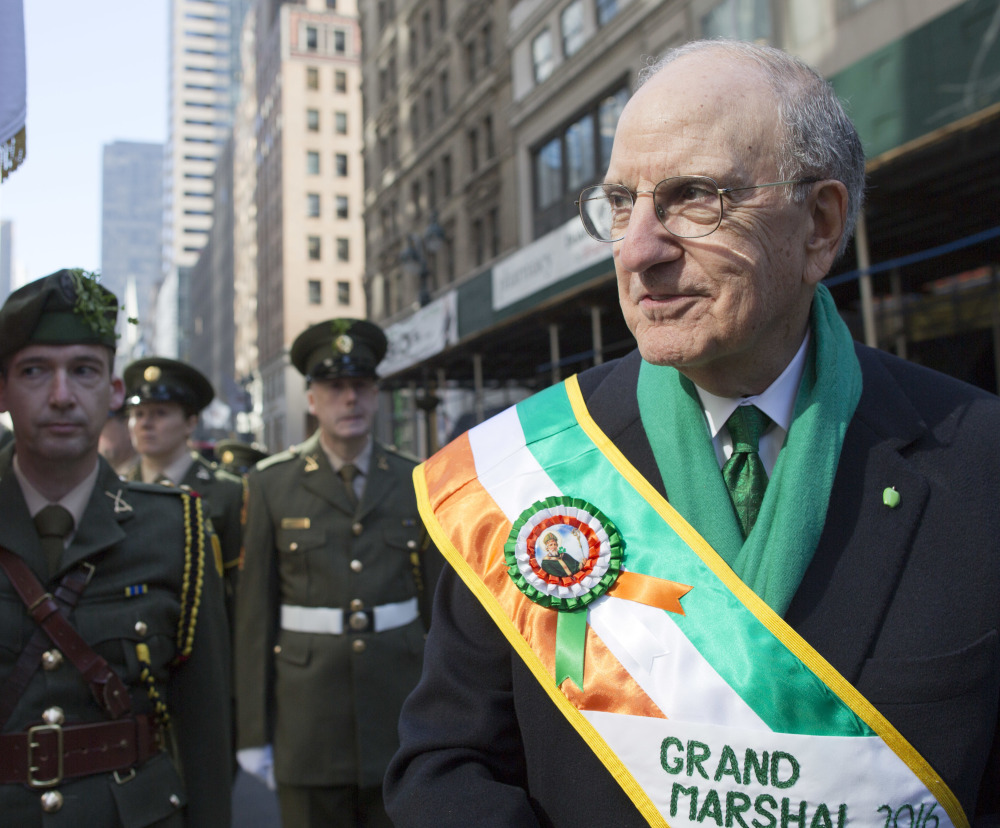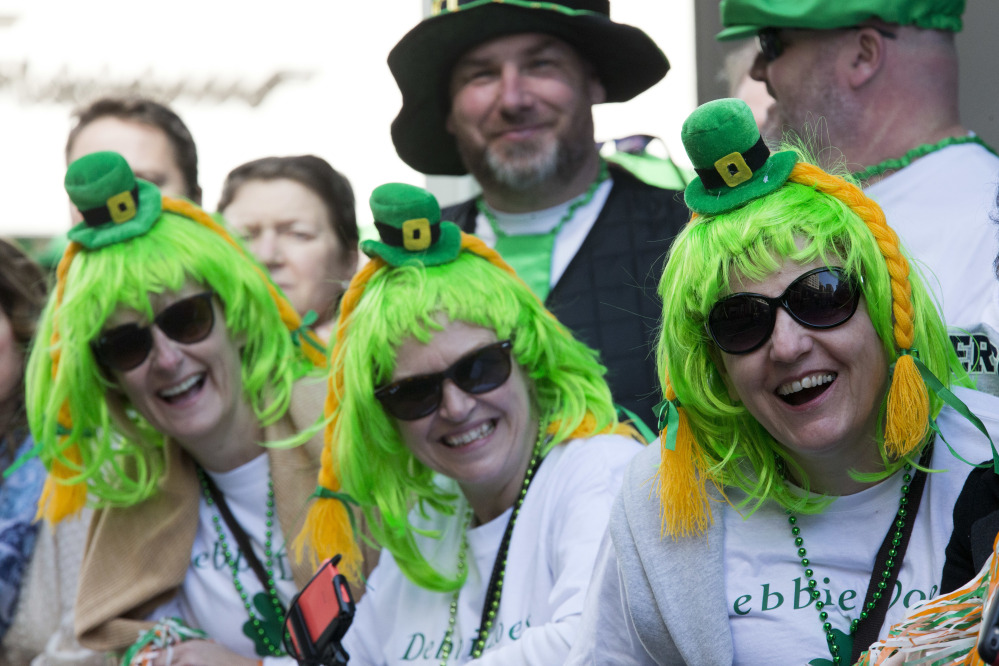NEW YORK — From the green line painted on Fifth Avenue to the tartans, pipes and drums, New York’s St. Patrick’s Day Parade reveled in its long traditions. But to the marchers behind a green-and-lavender banner, it also marked a new era of inclusion at the nation’s largest celebration of Irish heritage.
A year after a limited easing of the parade’s prohibition on gay groups, organizers opened the lineup more broadly to include activists who protested the ban for years.
“I never thought I’d see the day when I could march up Fifth Avenue in the St. Patrick’s Day Parade with my husband,” said Brendan Fay, chairman of the Lavender and Green Alliance. “When we started in 1991, after getting arrested so many times for protesting the parade, wow, what a moment this is.”
Roughly 200,000 marchers followed the Fifth Avenue route, flanked by onlookers forming a sea of green.This year’s parade honored the centennial of Ireland’s Easter Rising against British rule. It was also broadcast live in Ireland and the United Kingdom for the first time. The grand marshal of the parade was former U.S. Sen. George Mitchell of Maine, who negotiated the Northern Ireland peace accord.
The parade traces its history to 1762. For years, organizers said gay people could participate but couldn’t carry signs or buttons celebrating their sexual identities. Organizers said they didn’t want to divert focus from honoring Irish heritage.
Irish gay advocates sued in the early 1990s, but judges said the parade organizers had a First Amendment right to choose participants in their event.
Over the years, activists protested along the route, and some politicians boycotted. The pressure grew in 2014, when Mayor Bill de Blasio refused to march, and Guinness and Heineken withdrew their sponsorships.
The sponsorships resumed when parade organizers opened a door to gay groups last year, allowing a contingent from parade sponsor NBCUniversal. But critics saw the gesture as tokenism.
Meanwhile, Boston’s St. Patrick’s Day parade ended a ban on gay groups that organizers had successfully defended at the Supreme Court. In the ensuing months, gay marriage became legal throughout the U.S. and Ireland.
Against that backdrop, New York St. Patrick’s Day Parade organizers said they’d add a second gay group this year to the parade ranks: the Lavender and Green Alliance, which had long protested the gay-group ban.
De Blasio said, “Today everyone is celebrating together. Today, the city is at peace, and the city is unified, and we all feel tremendous pride in all of the people who brought us together.”
But not everyone felt that way.
“It’s contemptible,” said Bill Donohue of the Catholic League. The group stopped marching last year, saying it was unfair of organizers to open the parade to a gay group but not to an anti-abortion one. Some Catholics gathered along the route Thursday to pray in protest.
In Ireland, record crowds celebrated the national holiday with Dublin a parade led by the country’s most prominent disabled rights activist, Joanne O’Riordan, who was born without arms or legs.
Send questions/comments to the editors.




Success. Please wait for the page to reload. If the page does not reload within 5 seconds, please refresh the page.
Enter your email and password to access comments.
Hi, to comment on stories you must . This profile is in addition to your subscription and website login.
Already have a commenting profile? .
Invalid username/password.
Please check your email to confirm and complete your registration.
Only subscribers are eligible to post comments. Please subscribe or login first for digital access. Here’s why.
Use the form below to reset your password. When you've submitted your account email, we will send an email with a reset code.